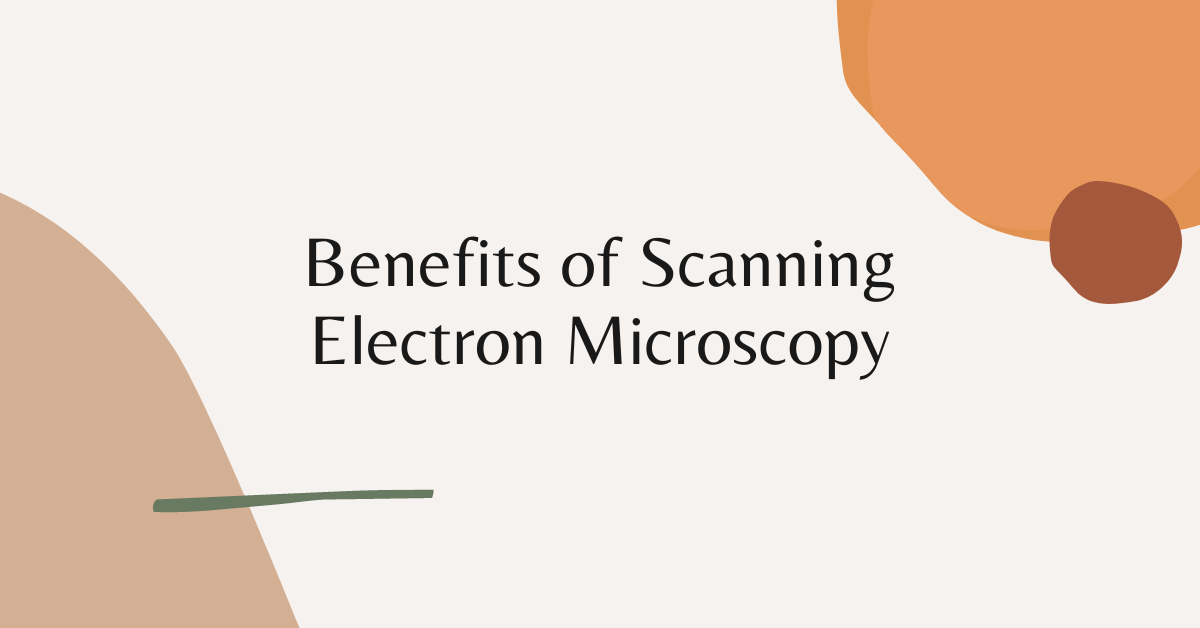
Benefits of Scanning Electron Microscopy
Scanning electron microscopy is a unique technique for many industries, including the pharmaceutical industry. It can allow you to detect defects and characterize surface finishes and chemical compositions. This technology is a highly cost-effective alternative to traditional laboratory methods.
High-resolution images
Scanning electron microscopy (SEM) by microvisionlabs.com is a powerful surface morphology tool that can produce detailed, high-resolution images of your samples. These images can provide important information about the composition and topography of your sample.
They can also be used to evaluate processes and materials in production. SEM uses a beam of electrons accelerated in a vacuum to create an image of the sample. The resolution of the image is partially dependent on the accelerating voltage. Higher accelerating voltages increase the resolution of the picture.
However, this can result in more damage to the sample. To produce a high-resolution image, a variety of factors must be considered. The size of the probe, the type of vacuum system, the accelerating voltage, and the electron source’s resolution all affect the image’s quality.
Characterize surface finish, defects, or chemical composition
SEM is an imaging tool that offers a considerable CAE Marketing & Consulting depth of field. It also allows for the analysis of minimal features and particles. In addition, it helps analyze processes used in the production of materials. An SEM image reveals a sample’s morphology and chemical composition. It can also be used to identify defects or contaminants.
For example, it can analyze wear debris on a coated surface. Also, it can be used to characterize the chemical composition of a coating, such as an organic coating on a metal substrate. Scanning electron microscopy, or SEM, is a type of electron microscopy that can generate images with magnifications as high as X50,000. It uses backscattered electrons created when the beam is positioned on the sample at a particular time.
Identify icosahedral viruses
Viruses are a diverse group of biomolecules that infect plants, animals, and protozoa. Viruses are classified by their shape, structure, and chemical composition. The conditions of the viruses determine their ability to invade target cells.
They are also crucial in the development of medicine and biotechnology. The icosahedral virus is a highly symmetrical structure. Its diameter ranges from 17 to 75 nm. Each particle is made up of about 60 equivalent subunits. Every subunit has six neighbors in the right-hand helix. The virus’s genome encodes several specific viral proteins and non-structural regulatory proteins. These proteins are expressed in various expression environments.
Plant viruses are widely used in bioimaging, tissue engineering, metallization, and pharmaceuticals. In addition, they are used in immunotherapy. Several landmark studies in structural biology have been conducted on the prototypical macromolecular assembly of the tomato bushy stunt virus. This virus was studied in the 1960s. During this time, negative staining was utilized to identify morphological features. Negative staining produces high-contrast images and can be used to examine particles that are small in size.
Cost
SEM is one of the most powerful analytical tools available to research scientists. It allows for the visualization of objects at a resolution 500,000 times higher than a light microscope. This tool can help researchers determine the chemical composition of a sample, identify surface contaminants and characterize the particles in a model.
Several factors affect the cost of an electron microscope. The type of instrumentation, the resolution, the chamber size, and optional accessories all contribute to the price. Choosing a suitable device depends on the application and your budget. For general applications, benchtop models are favored over full-sized SEMs. These items are much cheaper than a traditional SEM. Nevertheless, they are challenging to operate and maintain. They have more significant power consumption, which may not be appropriate for some laboratory environment.
Size
Scanning electron microscopes (SEMs) are an essential analytical tool in several fields. They can provide excellent three-dimensional images of various materials. These images can reveal information about a material’s surface morphology and composition. SEMs are highly useful in medical device engineering. They can help medical device engineers characterize the chemical composition of a sample, determine its surface finish, and identify defects. SEMs have many applications, from scientific research to production and forensics.
They are also critical in industries requiring solid material characterization. Most SEMs include an array of detectors. This ensures that the resulting image is of high quality. The resolution of an SEM depends on its source, beam size, and the interaction volume of the beam with the sample. When the beam reaches the model, it produces secondary electrons. In addition to providing contrast in atomic number, these electrons can reveal the crystal structures of minerals.






